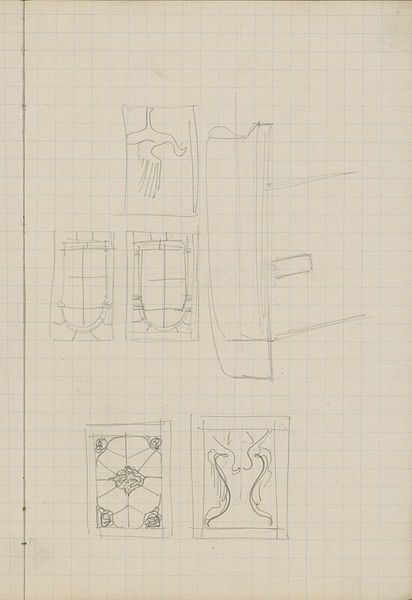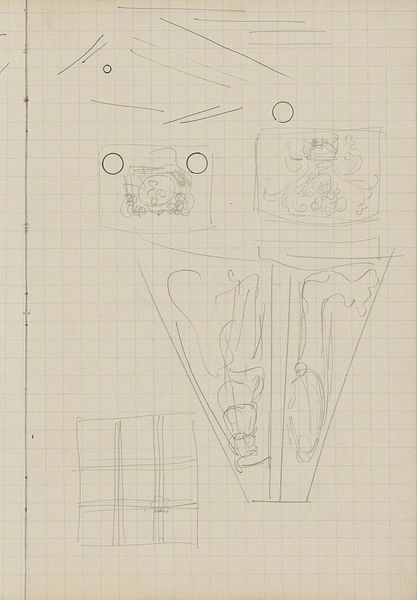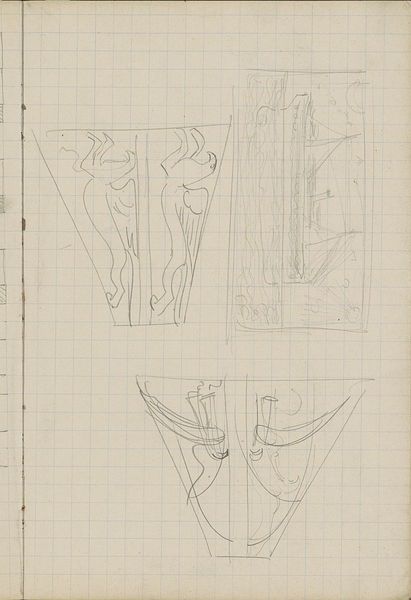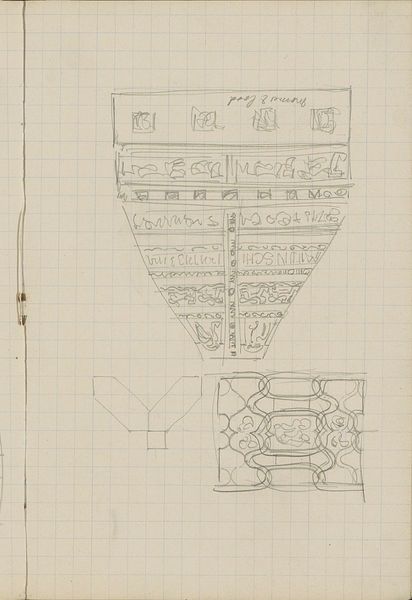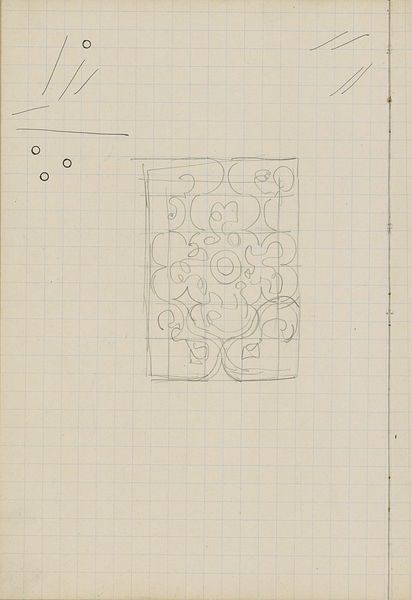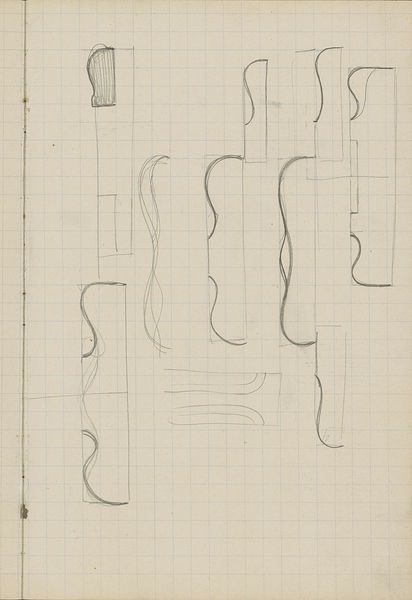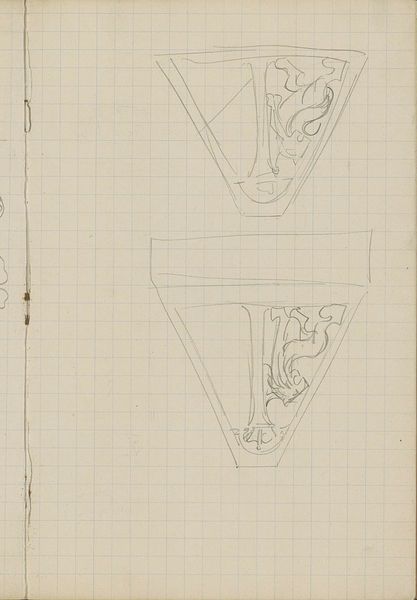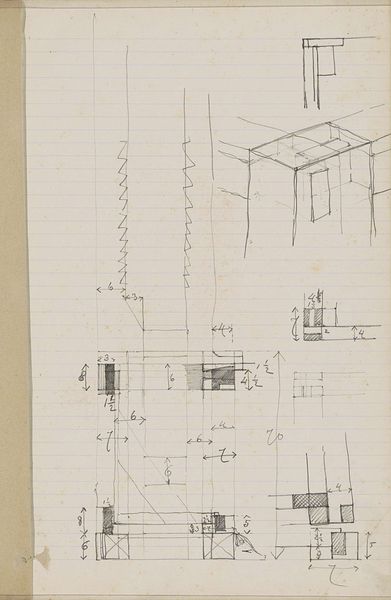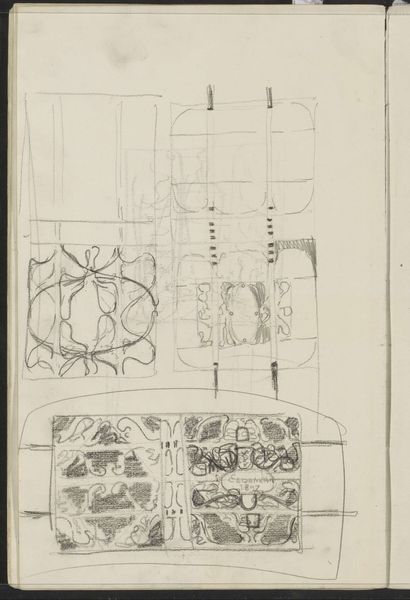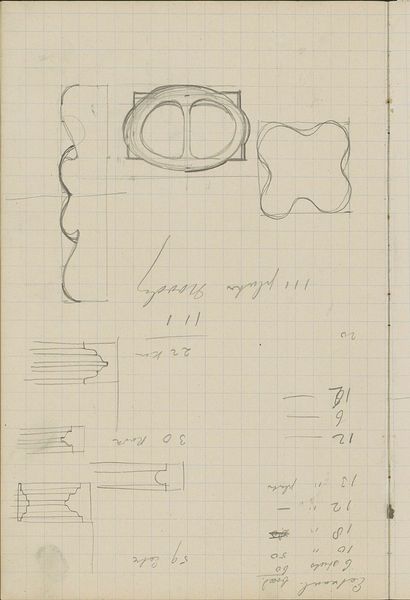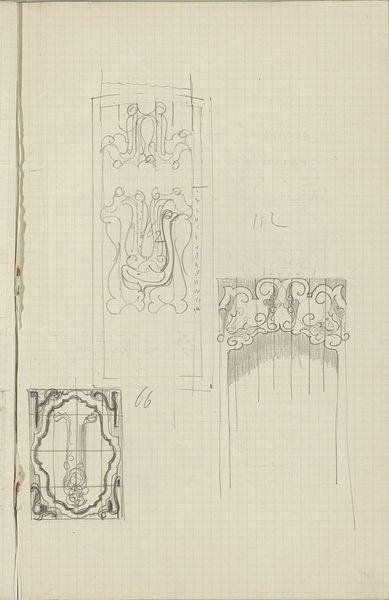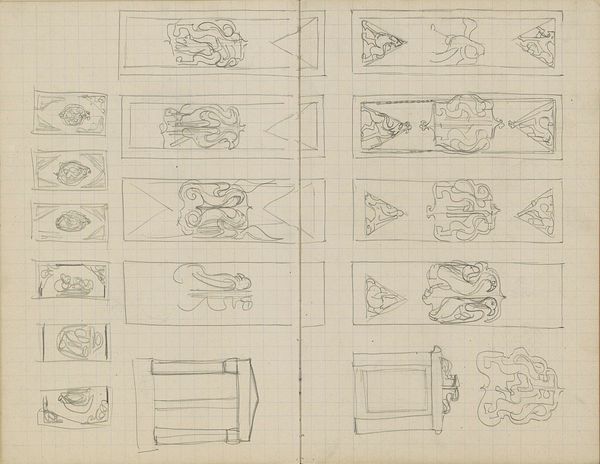
#
architectural sketch
#
aged paper
#
toned paper
#
hand written
#
sketched
#
hand drawn type
#
etching
#
personal sketchbook
#
hand-written
#
initial sketch
Copyright: Rijks Museum: Open Domain
Editor: This is "Ornament met een schip en fantasieornamenten," or "Ornament with a ship and fantasy ornaments," made around 1925 by Carel Adolph Lion Cachet. It’s currently at the Rijksmuseum. It’s an initial sketch and looks like it’s on graph paper. What draws my eye is the way Cachet is seemingly designing some functional, ornamental details. What do you notice? Curator: Looking at this drawing, what jumps out to me is the intersection of utility and aesthetics. Notice how the grid paper, usually a tool for precise planning, becomes the ground for freehand ornament. It immediately positions this piece within a dialogue about production and the integration, or perhaps collision, of artisanal craft within industrial design. Where does the hand-drawn element resist the constraints of mass production? Editor: So, it's the contrast between the grid and the organic shapes of the ornaments? How does the ship image factor into this? Curator: Precisely. Consider the ship – a powerful symbol of trade and connection in the 1920s. But here, it's embedded within ornamentation, almost subservient to it. Does this imply a commentary on how industry was consuming even powerful historical symbols? It challenges us to consider who this design was made for, what labor would go into it. Editor: So you are saying the sketch reflects how even potent cultural symbols got absorbed into mass production, which diminishes their impact. It also challenges conventional hierarchies. Curator: Exactly! These sketches make me consider the value attributed to preliminary work, typically deemed less worthy than the final product, challenging conventional artistic valuation. Editor: That's fascinating! I'd never thought about the sketch itself holding such significance. I was so focused on just trying to identify what was sketched, rather than why the sketch *itself* mattered. Curator: I find these things fascinating, how design becomes commodified and reshaped by those who produce them and consume it. The image provides an opening to examine design's capacity to preserve cultural values, as well as obliterate them. Editor: Absolutely. It’s definitely given me a new appreciation for initial design work, not just finished pieces. Thanks!
Comments
No comments
Be the first to comment and join the conversation on the ultimate creative platform.
